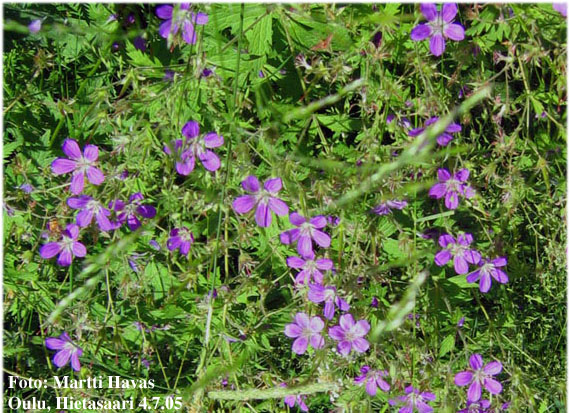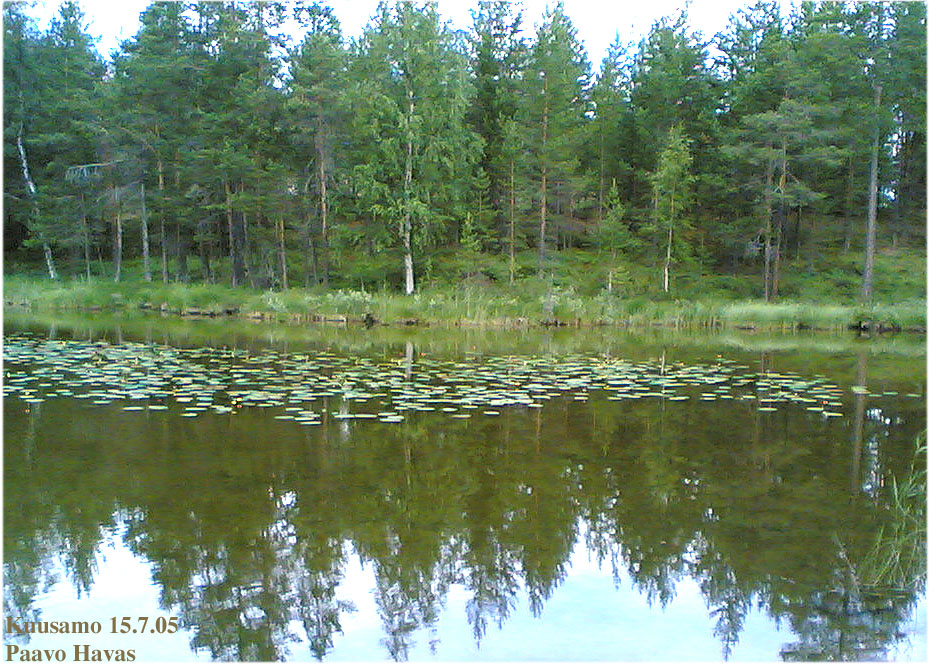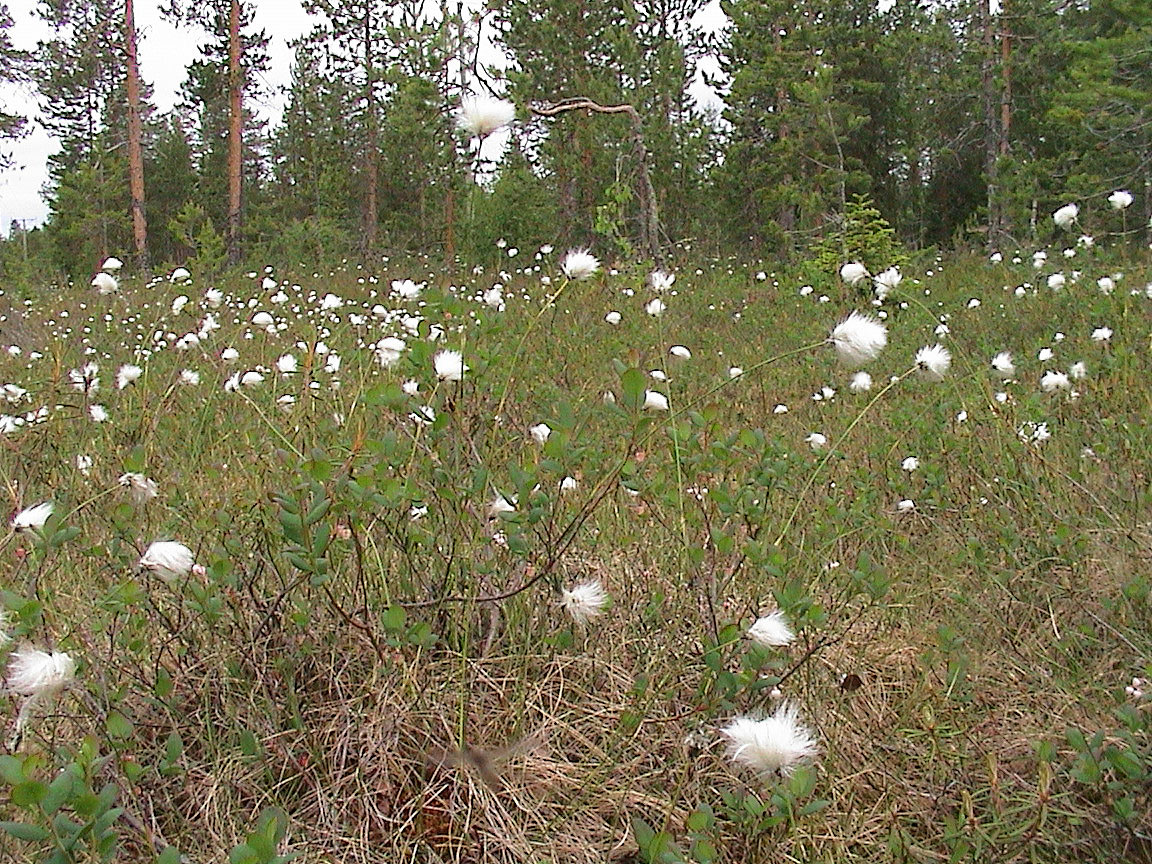Juhannuksen tienoilla pohjoisen suot ryöpsähtävät valkolaikkuisiksi - ikäänkuin olisi satanut uutta lunta.
Mm. tupasvillan (Eriophorum vaginatum) tähkän kehäsukaset
sekä suopursun (Ledum palustre)
ja hillan (Rubus chamaemorus) kukat tekevät silloin varsinkin rämeet valkolaikkuisiksi.
Midsummer time the northern bogs will change of brief duration into whitemottled - as it were snow...
Among others the ears hare's-tail of cottongrass (Eriophorum vaginatum) and
the flowers of marsh ledum (Ledum palustre) and cloudberry (Rubus chamemorus) give off its white colour to the landscape.

Samoihin aikoihin - kesäkuun loppupuolella - metsäkurjenpolvi (Geranium silvaticum) ja puna-ailakki (Silene dioica) luovat
puolestaan pellonpientareet sinipunaisiksi, ja leinikit (Ranunculus) ja kullerot (Trollius eoropaeus)
värjäävät kulttuurimaisemia (mm. jokivrsiniittyjä) keltaisella...
In the same time cranesbill (Geranium silvaticum) and red campion (Silene dioica) will tint
the banks into purple, and for one buttercup (Ranunculus) and globe flower (Trollius europaea)
will decorate the fields to yellow...

Keskikesän rauhaa lammella. Maan ja veden rajavyöhyke - ranta - on ekologisesti kiehtova:
se tarjoaa usein monipuolisia elämisen mahdollisuuksia.
Siellä tapaa myös eliöitä (kasveja ja eläimiä). joita ei juuri muualla näe (mm. suo- ja rantalajeja).
Midsummer peace in a pond. The zone between land and water - the shore - is very fascinating from ecological standpoint:
The shore proffer diverse living possibilities. On the shore zone you can see various life form, whom are uncommon on other places (among others mire- and shore species).




